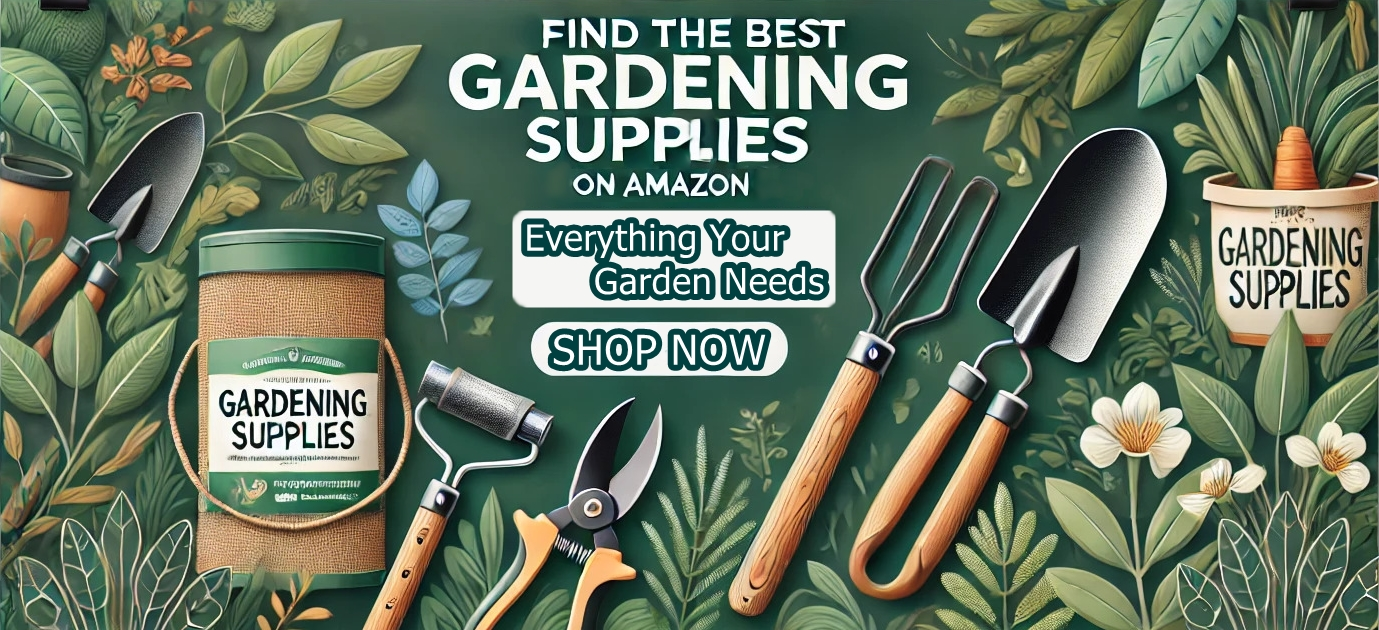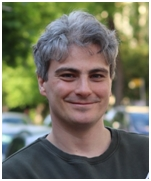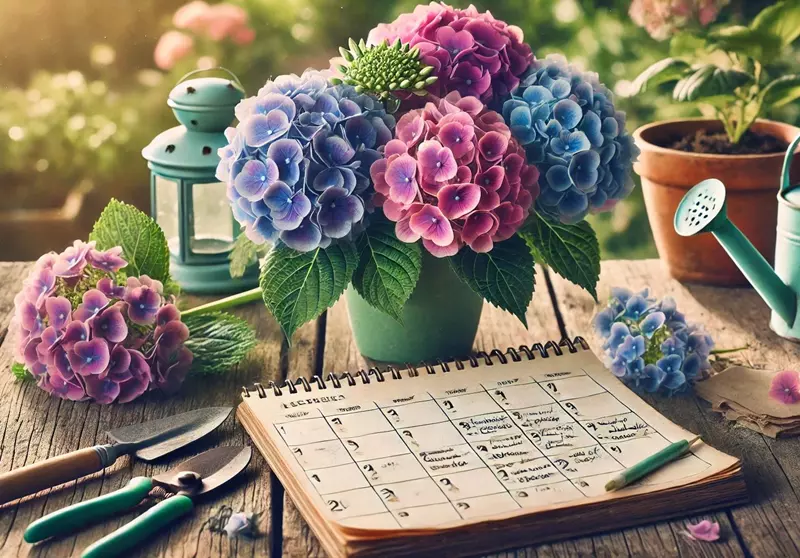Table of Contents
Hydrangeas are a popular choice for urban gardens in the UK due to their vibrant blooms, adaptability, and relatively low maintenance requirements. Their ability to thrive in confined spaces and varying light conditions makes them ideal for city environments.
 Source: pxhere.com; Author: TANAKA Juuyoh; License: CC CC BY 2.0
Source: pxhere.com; Author: TANAKA Juuyoh; License: CC CC BY 2.0
Benefits of Hydrangeas in Urban Gardens
Urban gardening presents unique challenges, including limited space, pollution, and varying light conditions. Hydrangeas, with their diverse varieties and adaptability, offer numerous benefits that make them ideal for city environments.
Aesthetic Appeal
Hydrangeas are renowned for their large, vibrant blooms that can transform urban spaces into lush, colourful retreats.
- Seasonal Interest: Many hydrangea varieties, such as the 'BOBO' Hydrangea, feature stunning blooms that change colours, enhancing garden aesthetics year-round.
- Variety of Colours: Depending on the species and soil pH, hydrangea flowers can range from blues and purples to pinks and whites, allowing for versatile design options.
- Foliage Texture: Beyond their blooms, hydrangeas offer lush foliage that adds texture and depth to garden designs.

Ecological Benefits
Incorporating hydrangeas into urban gardens supports local ecosystems and promotes biodiversity.
- Attracting Pollinators: Hydrangeas, such as the 'BOBO' variety, attract pollinators, supporting local ecosystems while adding vibrant beauty to your garden.
- Supporting Biodiversity: By providing nectar and habitat, hydrangeas contribute to a balanced urban ecosystem.
Suitability for Small Spaces
Hydrangeas are well-suited for urban gardens with limited space.
- Compact Varieties: Dwarf hydrangeas, such as the 'BOBO' Hydrangea, are perfect for small spaces, fitting seamlessly into tight spots without overwhelming the area.
- Container Gardening: Many hydrangeas thrive in pots, making them ideal for patios, balconies, and terraces.
- Vertical Growth: Climbing hydrangeas can cover walls and fences, adding greenery without occupying ground space.
Low Maintenance Requirements
Hydrangeas are relatively easy to care for, making them suitable for urban gardeners with busy lifestyles.
- Drought Tolerance: Once established, certain hydrangea varieties can handle dry spells, reducing the need for frequent watering.
- Adaptability: Hydrangeas can thrive in various soil types and light conditions, making them versatile choices for different urban settings.
- Minimal Pruning: Most hydrangeas require only occasional pruning to maintain their shape and encourage blooming.
Environmental Resilience
Hydrangeas are resilient plants that can withstand urban environmental stressors.
- Pollution Tolerance: Certain hydrangea varieties can handle air pollution, which is helpful in cities with dirty air.
- Shade Tolerance: Hydrangeas can thrive in partial shade, accommodating the light conditions typical of urban settings.
Hydrangeas offer a multitude of benefits for urban gardens, from enhancing aesthetic appeal to supporting local ecosystems. Their adaptability, low maintenance requirements, and resilience make them an excellent choice for city gardeners looking to create vibrant, sustainable green spaces.
Top Hydrangea Varieties for Urban Settings
Hydrangea macrophylla (Bigleaf Hydrangea)
Known for their large, mophead or lacecap flowers, Bigleaf Hydrangeas are a classic choice. Their flower colour can vary from blue to pink, depending on soil pH.
- Size: Typically grows to 1–1.5 metres in height and spread.
- Light: Prefers partial shade but can tolerate full sun with adequate moisture.
- Soil: Thrives in moist, well-drained soils.
Hydrangea paniculata (Panicle Hydrangea)
Featuring cone-shaped flower panicles, this variety is known for its hardiness and adaptability. The flowers often start white and can turn pink as they mature.
- Size: Can reach up to 2 metres in height and spread, but dwarf varieties are available.
- Light: Tolerates full sun to partial shade.
- Soil: Prefers well-drained soils and is more drought-tolerant than other hydrangeas.
More about Hydrangea paniculata (Panicle Hydrangea).
Hydrangea arborescens (Smooth Hydrangea)
This variety produces large, round flower heads and is known for its resilience and ease of care.
- Size: Typically grows to 1–1.5 metres in height and spread.
- Light: Prefers partial shade but can tolerate full sun with sufficient moisture.
- Soil: Adaptable to various soil types, provided they are well-drained.
More about Hydrangea arborescens (Smooth Hydrangea).
Hydrangea quercifolia (Oakleaf Hydrangea)
Noted for its distinctive oak-shaped leaves and elongated flower clusters, this variety adds unique texture to urban gardens.
- Size: Reaches up to 2 metres in height and spread.
- Light: Thrives in partial shade but can tolerate full sun.
- Soil: Prefers moist, well-drained soils rich in organic matter.
More about Hydrangea quercifolia (Oakleaf Hydrangea).
Hydrangea anomala subsp. petiolaris (Climbing Hydrangea)
This climbing variety is perfect for urban gardens with walls, fences, or trellises to cover. Its white, fragrant flowers bloom in early summer and are complemented by lush green foliage.
- Size: Can climb up to 15 metres if supported.
- Light: Thrives in partial to full shade, making it ideal for less sunny urban spaces.
- Soil: Prefers moist, well-drained soils but is quite adaptable.
More about Hydrangea petiolaris (Climbing Hydrangea).
Care Tips for Urban Hydrangeas
Hydrangeas are a popular choice for urban gardens due to their vibrant blooms and adaptability. However, city environments present unique challenges that require specific care strategies to ensure these plants thrive.
Watering
Consistent moisture is crucial for hydrangeas, especially in urban settings where heat and wind can cause rapid drying.
- Regular Schedule: Water deeply 2–3 times a week, ensuring the soil remains consistently moist but not waterlogged.
- Morning Watering: Water in the early morning to reduce evaporation and allow foliage to dry, minimising disease risk.
- Mulching: Apply a 5–7 cm layer of organic mulch around the base to retain soil moisture and regulate temperature.
Soil and Fertilisation
Urban soils can be compacted and low in nutrients, affecting hydrangea health.
- Soil Preparation: Incorporate compost or well-rotted manure to improve soil structure and fertility.
- pH Considerations: Hydrangea flower colour can be influenced by soil pH; acidic soils (pH below 6) produce blue flowers, while alkaline soils (pH above 7) result in pink flowers.
- Fertilisation: Apply a balanced, slow-release fertiliser in early spring to support growth and blooming.
Light Requirements
Hydrangeas prefer partial shade, making them suitable for urban gardens with limited direct sunlight.
- Optimal Placement: Position hydrangeas where they receive morning sun and afternoon shade to protect them from intense midday heat.
- Monitoring: Observe the plant for signs of stress; wilting or scorched leaves may indicate excessive sun exposure.
Pruning
Proper pruning promotes healthy growth and abundant blooms.
- Timing: Prune hydrangeas after flowering; for Hydrangea macrophylla, this is typically in late summer.
- Technique: Remove spent blooms and dead or weak stems to encourage new growth.
- Considerations: Avoid heavy pruning in late autumn or winter, as this can reduce next season's blooms.
Pest and Disease Management
Urban environments can expose hydrangeas to various pests and diseases.
- Common Pests: Aphids and spider mites are frequent issues; inspect plants regularly and use insecticidal soap if necessary.
- Diseases: Powdery mildew and leaf spot can occur; ensure good air circulation and avoid overhead watering to minimise risk.
- Preventative Measures: Maintain plant health through proper watering, fertilisation, and pruning to reduce susceptibility to pests and diseases.
With attentive care tailored to the urban environment, hydrangeas can flourish and bring vibrant beauty to city gardens. By addressing their specific needs in watering, soil, light, pruning, and pest management, gardeners can enjoy healthy, blooming hydrangeas throughout the growing season.
Specific Recommendations for Different Urban Environments
Urban gardeners face unique challenges, such as limited space, variable light conditions, and pollution. Hydrangeas, however, offer versatile solutions for these environments. From compact balconies to shaded urban corners, there's a hydrangea variety suited to every need.
Hydrangeas for Balconies and Terraces
Small urban spaces like balconies and terraces benefit from compact hydrangea varieties that thrive in containers. These plants add vibrant colour and texture without taking up too much room.
- Hydrangea paniculata 'Little Lime': A dwarf variety reaching 1 metre in height, with lime-green flowers that age to pink in autumn. Perfect for container planting.
- Hydrangea macrophylla 'Mini Penny': A compact mophead hydrangea growing to 0.9 metres, offering vibrant blooms in blue or pink depending on soil pH. Ideal for patios and terraces.
Ensure containers have proper drainage and use high-quality potting mix. Regular watering and feeding are essential for healthy growth.
Hydrangeas for Public Parks and Streetscapes
For larger urban green spaces, robust hydrangea varieties that tolerate variable soil conditions and require low maintenance are ideal.
- Hydrangea arborescens 'Annabelle': With large, white flower heads and a hardy nature, this variety thrives in urban pollution and is visually striking in public spaces.
- Hydrangea paniculata 'Limelight': Known for its lime-green flowers that transition to pink, this hydrangea reaches 2.5 metres, making it a focal point for streetscapes and parks.
These varieties require minimal pruning and are resistant to pests and diseases, making them excellent choices for urban landscaping.
Hydrangeas for Shaded Urban Areas
Urban spaces often include shaded areas between buildings or under tree canopies. Certain hydrangea varieties thrive in these low-light conditions, bringing life to otherwise dull corners.
- Hydrangea macrophylla 'Nikko Blue': A classic choice for partial shade, offering large blue blooms in acidic soils and vibrant pinks in alkaline soils.
- Hydrangea anomala subsp. petiolaris (Climbing Hydrangea): A shade-tolerant climbing hydrangea ideal for north-facing walls, producing fragrant white flowers in summer.
In shaded areas, enrich the soil with organic matter and ensure proper drainage to support healthy growth.
Hydrangeas offer versatile solutions for various urban gardening needs. Whether enhancing a balcony, beautifying a public park, or brightening a shaded space, these plants bring resilience, beauty, and ecological benefits to city environments. With the right care and variety selection, hydrangeas can transform urban spaces into vibrant green havens.
Incorporating Hydrangeas into Modern Minimalist Urban Gardens
Modern urban gardens often embrace minimalist designs, focusing on simplicity, clean lines, and a restrained colour palette. Hydrangeas, with their elegant blooms and versatile nature, can seamlessly integrate into such settings, adding both texture and visual interest.
Hydrangeas in Minimalist Design
To incorporate hydrangeas into a minimalist garden, consider the following approaches:
- Monochromatic Planting: Utilise hydrangeas with white or pale blooms to maintain a subdued colour scheme, enhancing the minimalist aesthetic.
- Geometric Placement: Plant hydrangeas in symmetrical patterns or linear arrangements to reinforce clean lines and structure.
- Seasonal Interest: Select varieties that offer year-round appeal, such as those with attractive foliage or bark, ensuring the garden remains engaging throughout the seasons.
Ideal Companion Plants for Urban Settings
Pairing hydrangeas with complementary plants can enhance the minimalist design and ensure a cohesive look. Consider the following companions:
- Shade-Tolerant Ferns: Ferns like Dryopteris species offer delicate fronds that contrast with hydrangea blooms, adding texture without overwhelming the space.
- Dwarf Evergreens: Compact evergreens such as Buxus sempervirens (boxwood) provide year-round structure and a deep green backdrop, highlighting the hydrangeas' colours.
- Ornamental Grasses: Grasses like Hakonechloa macra (Japanese forest grass) introduce movement and a soft, flowing element to the garden.
Design Tips for Urban Minimalist Gardens
When designing a modern minimalist garden with hydrangeas, keep the following tips in mind:
- Limit Plant Varieties: Stick to a select few plant types to avoid visual clutter and maintain simplicity.
- Emphasise Foliage: Choose plants with interesting leaf shapes and textures to add depth without relying on a multitude of colours.
- Incorporate Hardscaping: Use materials like stone, concrete, or wood to create pathways and borders that complement the minimalist theme.
Hydrangeas can be a valuable addition to modern minimalist urban gardens, offering elegance and versatility. By thoughtfully selecting companion plants and adhering to minimalist design principles, you can create a serene and cohesive outdoor space that thrives in an urban environment.
How Hydrangeas Support Urban Wildlife Survival
Urbanisation often leads to habitat loss and fragmentation, posing significant challenges to wildlife survival in city environments. Incorporating plants like hydrangeas into urban landscapes can play a crucial role in supporting local fauna by providing essential resources and enhancing biodiversity.
Providing Food Sources
Hydrangeas offer various food resources that benefit urban wildlife.
- Nectar for Pollinators: Certain hydrangea varieties, such as lacecap types, produce fertile flowers rich in nectar, attracting bees and butterflies.
- Seeds for Birds: As hydrangea flowers mature, they develop seeds that serve as a food source for seed-eating birds, especially during autumn and winter months.
Offering Shelter and Habitat
The dense foliage and structure of hydrangeas provide shelter and nesting opportunities for various urban wildlife species.
- Bird Nesting Sites: The sturdy branches and ample leaf cover offer ideal conditions for birds to build nests, protecting them from predators and harsh weather.
- Invertebrate Habitats: The microhabitats within hydrangea bushes support insects and other invertebrates, contributing to a balanced urban ecosystem.
Supporting Biodiversity
Integrating hydrangeas into urban gardens enhances biodiversity, which is vital for resilient ecosystems.
- Attracting Diverse Species: By providing food and shelter, hydrangeas attract a variety of species, from pollinators to birds, enriching the urban wildlife community.
- Creating Green Corridors: When planted strategically, hydrangeas can form part of green corridors that facilitate wildlife movement across urban landscapes.
Enhancing Urban Microclimates
Hydrangeas contribute to improving urban microclimates, indirectly benefiting wildlife.
- Temperature Regulation: Their foliage provides shade, helping to lower temperatures in urban heat islands, creating more habitable conditions for various species.
- Air Quality Improvement: Hydrangeas absorb pollutants, contributing to cleaner air, which benefits both wildlife and human residents.
Incorporating hydrangeas into urban gardens and green spaces offers multiple benefits for wildlife survival. By providing essential resources such as food and shelter, supporting biodiversity, and enhancing microclimates, hydrangeas play a significant role in fostering resilient urban ecosystems.
Hydrangeas are an excellent addition to urban gardens in the UK, offering versatility, beauty, and resilience in confined spaces. Whether you choose the classic Hydrangea macrophylla or the climbing Hydrangea petiolaris, these plants bring charm and seasonal interest to any setting. By selecting the right variety and providing proper care, you can enjoy vibrant blooms and lush foliage year after year, even in the heart of the city.
About the Author

Richard Seres-Nagy is a passionate gardener with over 20 years of experience in hydrangea care. He founded Hydrangea Library to share expert advice, step-by-step guides, and practical tips for fellow gardening enthusiasts.
Read More





